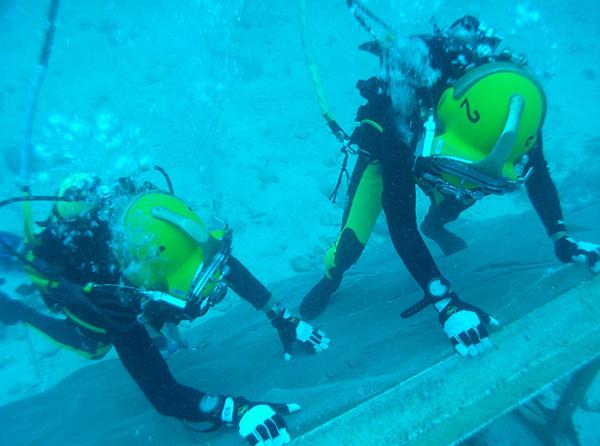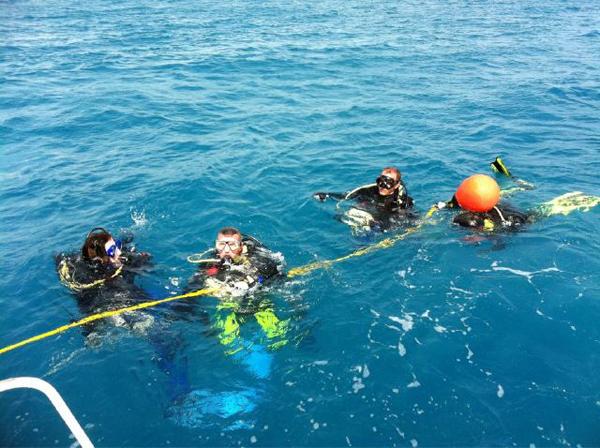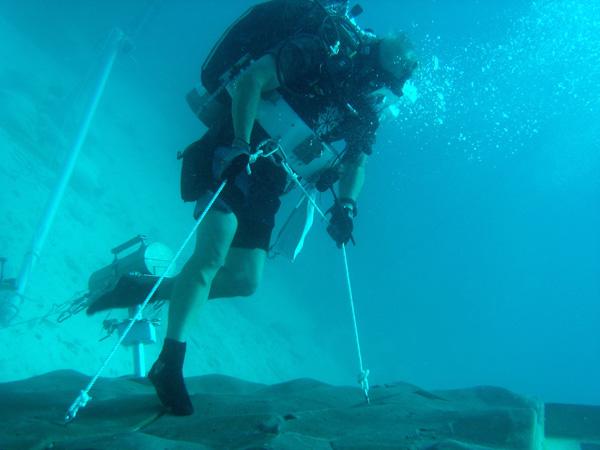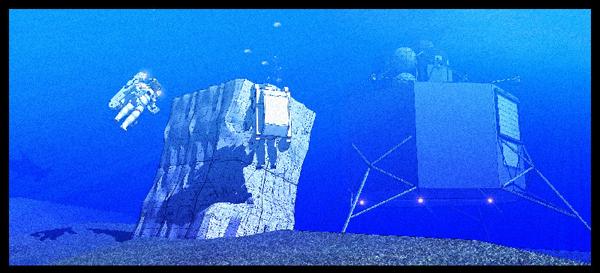Astronauts Dive Deep on Undersea 'Asteroid' Mission


After waiting out stormy weather and rough seas, a team of astronauts successfully began a tough mission today (Oct. 20), but instead of launching into space, this crew is headed for the ocean floor on a mock asteroid trip.
The six "aquanauts" splashed down today at 2:15 p.m. EDT (1815 GMT) and will spend the next 13 days living inside a small laboratory called Aquarius on the ocean floor during their undersea mission to test different ways to explore an asteroid. The expedition was originally scheduled to begin Monday (Oct. 17), but heavy rain and storms in the area made the waters unsafe for the dive, NASA officials said.
This is NASA's 15th NEEMO (NASA Extreme Environment Mission Operations) voyage to test technology and innovative engineering solutions for future space missions. NEEMO 15, however, is the first to experiment with concepts of how to visit and explore an asteroid. [Gallery: Visions of NASA Asteroid Mission]
The weather delays alone make this a good simulation of real spaceflight, NEEMO 15 aquanaut David Saint-Jacques, of the Canadian Space Agency, joked to SPACE.com.
Working underwater
For nearly two weeks, the NEEMO 15 crew will live and work at the Aquarius Underwater Laboratory, which sits 60 feet (18 meters) below the Atlantic Ocean, about 3 1/2 miles off the shore of Key Largo, Fla. The agency uses this lab to approximate the weightless conditions in space and on an asteroid.
"There are a lot of aspects to what we can do on NEEMO that are directly comparable to flying in space," NASA astronaut and NEEMO 15 commander Shannon Walker told SPACE.com. "For this particular mission, because we're on the ocean floor, we're able to be mutually buoyant. It's one of the few places where we can do tasks as if we're on an asteroid."
Get the world’s most fascinating discoveries delivered straight to your inbox.
To train for spacewalks on the exterior of the International Space Station, astronauts don full spacesuits and meticulously rehearse the steps in a giant swimming pool called the Neutral Buoyancy Laboratory (NBL) at NASA's Johnson Space Center in Houston. For NEEMO missions, working on the ocean floor helps astronauts and engineers create more realistic simulations to test concepts and technology.
"A lot of what we do here could be done in the NBL, but it would not have the air of reality," Saint-Jacques said. "It wouldn't put the operational pressure on everybody to do things just like on an asteroid mission. Here, it's really like a space mission. We have a mobile mission control, and lots of technical support to make this work."
Furthermore, since the aquanauts will be living underwater for 13 days, they practice diving techniques that allow their bodies to adapt and become saturated in the underwater environment to avoid the dangers of decompression sickness, or the bends. This enables the crew to work longer hours on the ocean floor.
"Because we are saturated, it means we can do two or three hours of [extravehicular activities] a day," Saint-Jacques said. "That would be impossible in the NBL."
Stepping stones to an asteroid
NEEMO 15 will test various concepts of how to anchor to an asteroid, travel around on its surface, and perform experiments. During the mission, aquanauts will work outside the Aquarius lab for two to three hours each day.
A mock asteroid landscape on the ocean floor was set up earlier this year for the NEEMO 15 expedition. A fiberglass wall will also enable the aquanauts to test different ways to drill anchors to the surface of an asteroid. [Video: Rock & Roll Asteroids]
"Once we go off to an asteroid, that's a huge undertaking that we want to be in the best position to do things efficiently and successfully," Walker said. "We want to test all these different combinations and see what's the most efficient way to accomplish science tasks. Along with that, we're going to have to figure out how to attach to it and maneuver around the asteroid."
NASA astronauts Stan Love, Richard Arnold and Mike Gernhardt will also be at the controls of a small submarine, called the DeepWorker submersible. The submarine will be used in place of the agency's Space Exploration Vehicle, which is a rover that is being developed for a future manned asteroid mission.
Future space missions
The results of NEEMO 15 will help NASA plan for a future manned mission to a space rock.
"NASA's exploration branch is really keen on this mission," Saint-Jacques said. "They are waiting for the results to inform their engineering teams as to what are the good architectural solutions to pursue. It's a very smart way to work because before you get the big engineering team working and spend a lot of time, manpower and resources, you do these relatively cheap investigations to make sure you're on the right track."
Walker, Saint-Jacques and Takuya Onishi, of the Japan Aerospace Exploration Agency, will live aboard the Aquarius lab for 13 days. Noted Mars planetary scientist Steve Squyres and two veteran divers, James Talacek and Nate Bender of the University of North Carolina, Wilmington, will also provide support and work with the NEEMO 15 crew underwater.
Canadian astronaut Jeremy Hansen and Jeanette Epps of NASA will guide the NEEMO 15 crewmembers as capsule communicators in Mission Control.
As part of the agency's new direction, NASA is aiming to send humans on a mission to an asteroid by the year 2025. Walker said she is excited to play a role in planning such a mission, and would be keen on visiting an asteroid in the future.
"I would love to go wherever NASA wants to go," Walker said. "I might be near the end of my career, but I would still be interested."
The NEEMO mission is a joint venture between NASA, the National Oceanic and Atmospheric Administration (NOAA), which owns the Aquarius laboratory, and the University of North Carolina, Wilmington, which operates the underwater facility.
This story was provided by SPACE.com, a sister site to OurAmazingPlanet. You can follow SPACE.com staff writer Denise Chow on Twitter @denisechow. Follow SPACE.com for the latest in space science and exploration news on Twitter @Spacedotcom and on Facebook.

Denise Chow was the assistant managing editor at Live Science before moving to NBC News as a science reporter, where she focuses on general science and climate change. Before joining the Live Science team in 2013, she spent two years as a staff writer for Space.com, writing about rocket launches and covering NASA's final three space shuttle missions. A Canadian transplant, Denise has a bachelor's degree from the University of Toronto, and a master's degree in journalism from New York University.





